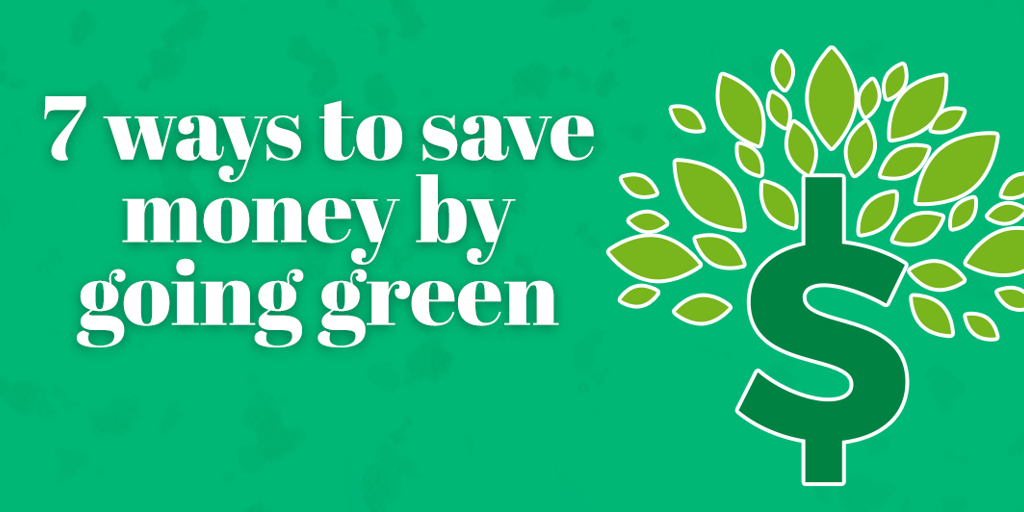


Seven ways to save money by going green
We all know we should turn off the lights when we leave a room, unplug appliances we aren’t using and invest in reusable drinkware to reduce our carbon footprints. But, changing other small habits can have a positive impact not only on the environment, but also your wallet.
It’s often thought that “going green” is expensive or inconvenient, but the reality is it will save you money once you’ve made the switch.
Here are seven simple changes that can make a big impact:
1. Open or close your blinds.
Opening your blinds in the winter will let sunlight in to naturally warm your house, while closing them in the summer will help keep things cool. In the spring and fall seasons, open your windows. Fresh air is not only a natural way to regulate your home’s temperature, but it’s also beneficial to your mental and physical health.
2. Make your own household cleaners
Vinegar, baking soda and lemon juice are items you probably already have in your pantry, and can be mixed to create numerous effective cleaning solutions. 3. Invest in reusable household items
3. Invest in reusable household items
Swapping out single-use items for reusable ones is a very simple way to minimize your carbon footprint and pad your wallet. Making the switch to cloth napkins, rechargeable batteries and reusable coffee filters, sandwich bags, baking liners, and cloth face pads will save you money and time shopping in the grocery store.
4. Wash your clothes in cold water
Doing your laundry in cold water is a great way to save energy and cut your utility costs. Most of the energy used for washing clothing is spent on heating the water. Cold water works just as well on the majority of loads, and will even help prevent shrinking while expanding the life expectancy of your clothing.
5. Air-dry your clothes
There are multiple benefits to line-drying your clothing, including less wear and tear on clothing, fresh smells, natural sun bleaching for your whites and energy reduction.
If you’d rather avoid the elements, try air-drying indoors. Drying racks, shower rods, radiators and towel racks can all be put to good use. While certain pieces are non-negotiable dryer items, partially cutting down on your dryer use can save you a lot of money over time.
6. Change your showerhead
Save water by swapping out your showerhead for a low-flow fixture. It’s an upfront investment that pays off over time by lowering your water bill. Pair this change with taking shorter showers, and you could see a 50-percent reduction in water consumption.
7. Swap out your light bulbs
Compact Fluorescent Lamps (CFLs) and Light Emitting Diodes (LEDs) are energy-efficient light bulbs with a lifespan of eight to 15 years, compared to the two-year lifespan of traditional incandescent bulbs. Statistics show that if you replace your home’s five most-frequently used lights with energy-efficient bulbs, you can save up to $75 each year.
Recent Articles
Join our e-newsletter
Sign up for our e-newsletter to get new content each month.






















